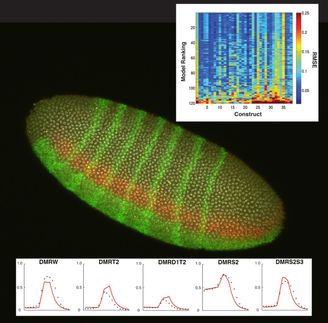HSC-Institute of Biosciences and Technology researchers learn about role of mutated DNA repeats in diseases like cancer
Advertisement
Researchers at the Texas A&M Health Science Center Institute of Biosciences and Technology in Houston have uncovered new information about the role of certain mutated segments of DNA in forming diseases like cancer. This finding could someday lead to therapies targeting the mutated DNA segments.
“Researchers knew that some DNA repeats are found to be very abundant in the human genome – the human body’s genetic map – whereas others are extremely rare and sometimes absent, but they did not know why,” said Albino Bacolla, Ph.D., research associate in the Center for Genome Research and study lead author. In their study, Dr. Bacolla and his colleagues found that over time, DNA structure and base stacking (where the rings of DNA lie on top of each other) determine the number and length of short DNA repeats (microsatellites) in the vertebrate genome. They also learned the differing microsatellite lengths may lead to disease because the different lengths could regulate gene expression and protein function, contributing to or perhaps hampering the cellular regulatory makeup.
Dr. Bacolla said that he and his colleagues found that some DNA repeats are like a gymnast; they can twist in strange ways and form small structures that look like a cross (cruciforms), and these cruciforms are believed to be an integral part of processes leading to cancer. Cells think that these structures are not part of their DNA and chop them off. So, over millions of years, these sequences become very rare or are lost altogether from the genome.
The study authors found short DNA repeats called microsatellites are hallmarks of cancer. Abundant in the genome of humans and other vertebrates, microsatellites – when unstable – could lead to cancer. Microsatellite instability occurs when cells contain mutations in DNA repair genes. Some of these sequences accumulate errors and become longer or shorter.
Studies have found that variation in sequence length is a key factor in several cancers including colorectal, endometrial, ovarian and gastric. Variations in sequence length also can transfer the susceptibility for inherited diseases over generations.
Different people generally have a different number of repeats at a particular site within their genome, and those individuals with the “wrong” number of repeats are more likely to develop diseases like asthma, endometriosis and breast cancer. Other conditions that could develop are a shortage of oxygen to the brain, pneumonia in the elderly and autoimmune diseases.
Original publication: “Abundance and Length of Simple Repeats in Vertebrate Genomes are Determined by their Structural Properties”; Genome Research 2008.
























































